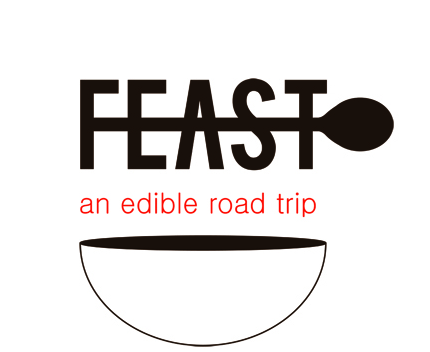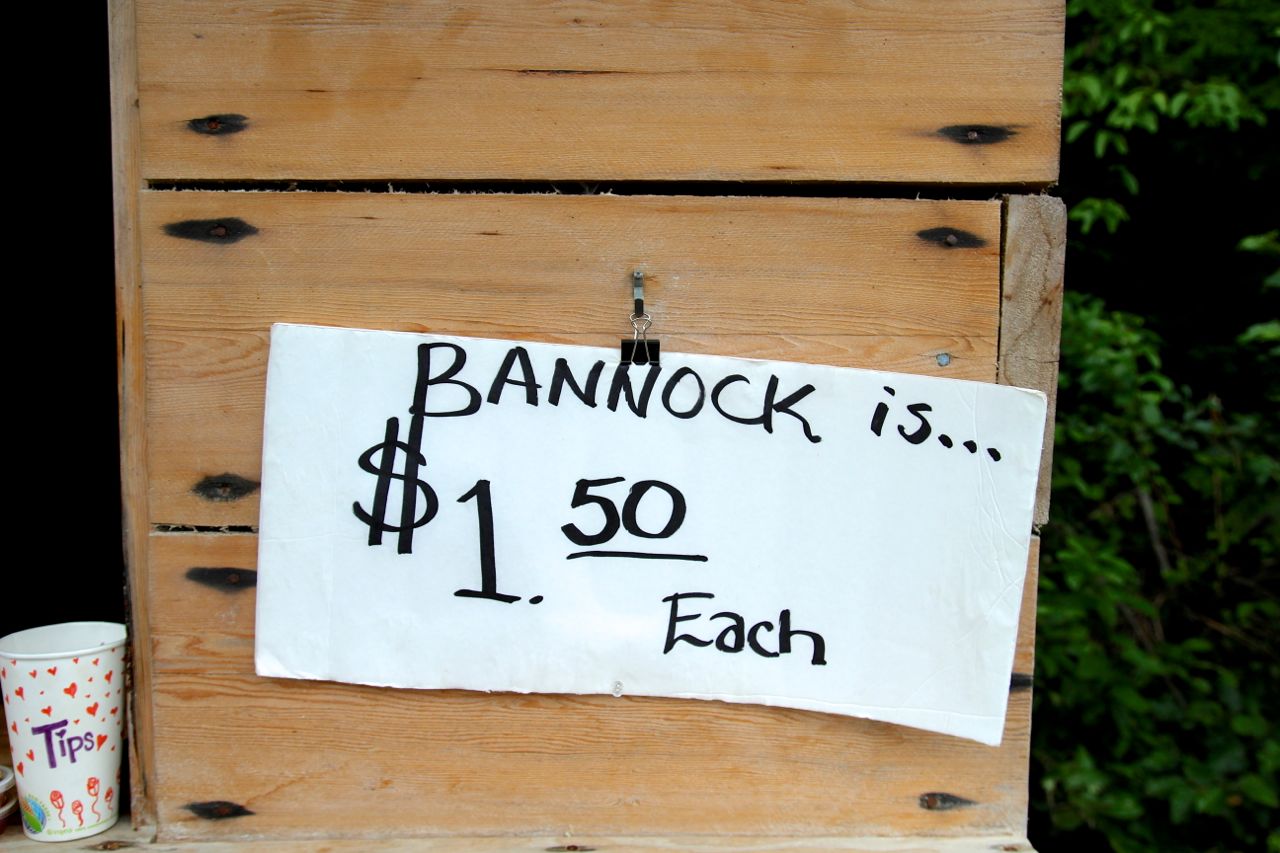FEAST on This #6: Roadside Bannock
I am a DEEP sleeper, and when I’m road trip slumbering (on the passenger side, of course), there are two things that can wake me: the need for the bathroom, and the need for snacks. I was therefore thrilled when Dana, driving us through northwest BC on our way to Prince Rupert, stopped when she saw a sign for “Fresh Bannock” on the highway. We pulled up to a little wooden shack, where a woman named Christine was selling cedar jewelry and pieces of golden, fried dough.
There are many different types of bannock – the kind we had on Spring Island was more biscuit-like, made with whole wheat flour, while the kind we bought from Christine was fried, lighter in texture, and made with white flour. Both are usually served with jam or honey, and I would be willing to wake from a nap for either.
Just down the highway we stopped again, because who could pass by this, the tiniest of churches? The Usk Pioneer Chapel (just outside of Terrace) seats eight, and has a door that my taller friends would have to stoop to get through.
The little white church was built in the early 1900’s, and moved to its current site in 1967. If you’re passing by, it’s worth a stop to photograph – just be careful not to get any jam or bannock on your camera.
-LA



























